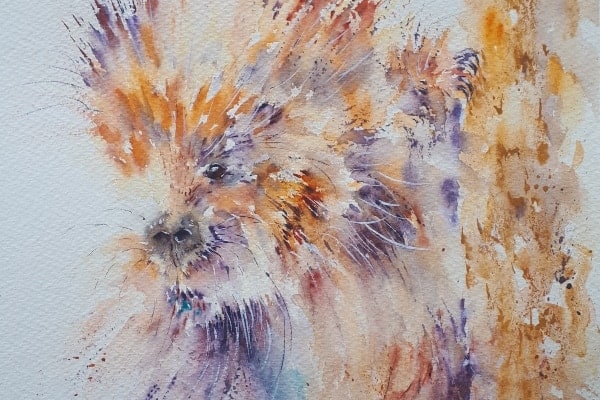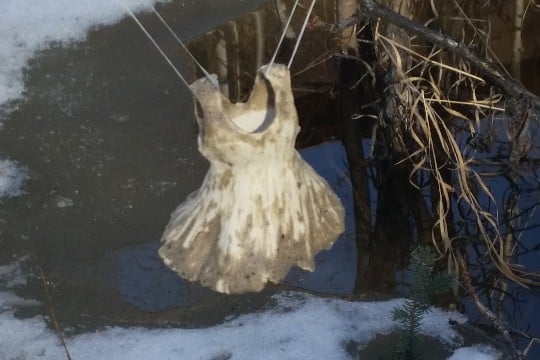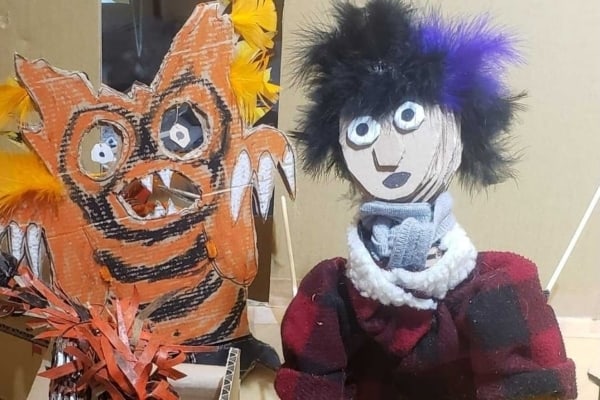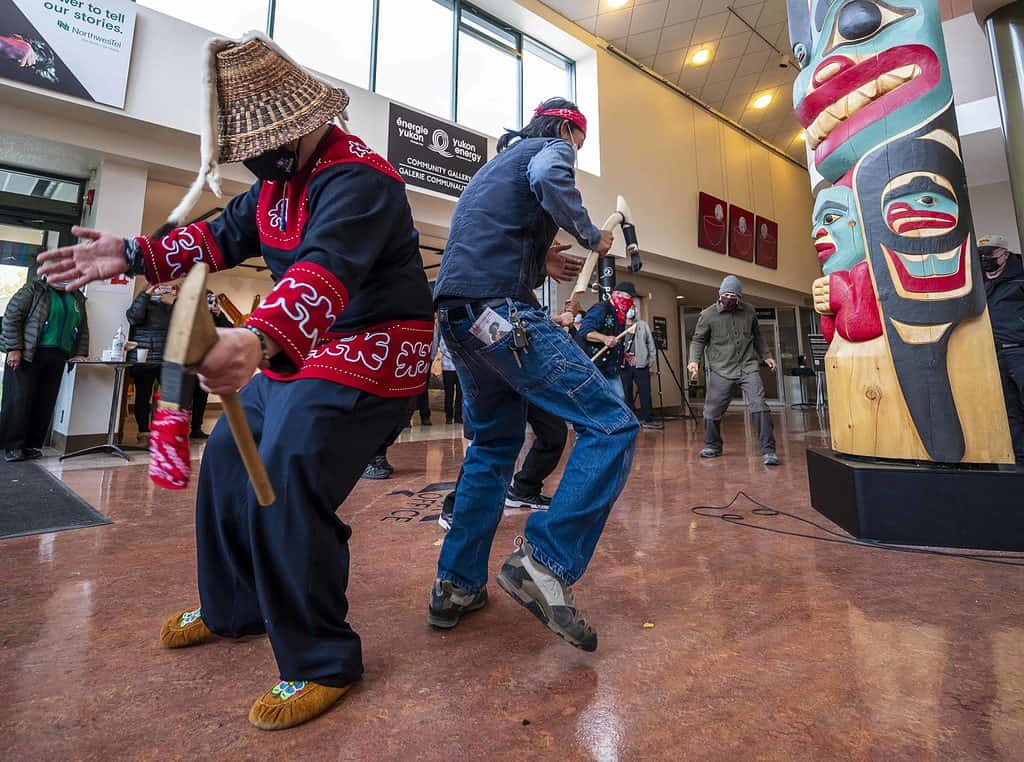When you step into the Solo Show Room at the Copper Moon Gallery, you’re greeted with a sense of rhythm.
A row of women raise their hands in thanksgiving. Painted images of masks present a raven from different angles. Four drums repeat themselves across a canvas. Repetition and groups of similar items create the rhythm.
The solitary also find a home in this show. Lone figures, such as the artist’s granddaughter, perched on a rock in front of a starry sky; and a moose in a limpid wetland, also stand here. Wilderness Hygiene depicts a pair of moccasins down by the water and broad, strong hands washing themselves by the water’s edge – a beautiful moment of solitude.
But the sense of belonging to a group, that drum line under the flute’s solo song, underscores the show.
The show depicts many cultural acts and artefacts of Jean Taylor’s Teslin Tlingit First Nation. She uses painting as a way of paying close and loving attention to them. This is one of the things painting can be used to do. The long, contemplative act of getting it right, painting something realistically, can be an act of love.
Amid all the mukluks, mittens and moccasins, she depicts two women beading: one assembling a moccasin and one stringing red beads onto thread and beading them onto a moccasin’s tongue. This canvas is called A Loving Act. It’s emblematic of the attitude that comes through Taylor’s show.
Harreson Tanner, Copper Moon Gallery curator, has fallen in love with many of the pieces, himself, and was only prevented from purchasing a piece by someone else buying it first.
“People really get that her soul is in her work.”
Taylor’s painting sensibility reminds me of Vermeer. That Dutch painter depicted the cultural artefacts that middle-class people filled their homes with, in imperial seventeenth-century Holland. He was able to evoke a sense of light and stillness in his figures surrounded by paintings and Persian carpets.
Her reds, in the traditional Tlingit textiles she depicts, remind me of Vermeer’s reds in those carpets. She’s chosen to use a lot of blue to depict the black usually found with red and white in Tlingit ceremonial regalia. That with the muted yellows of her backgrounds, with ochres and siennas in her faces and hides, creates a colour scheme based on the three primary colours, but each is complex enough – the red contains yellow in the lighter areas and blue in the darker – that it’s both simple and rich.
Taylor’s attention to the beadwork and mukluks, traditionally made by her nation, do something interesting in paint. It’s a cultural artefact depicting another cultural artefact, and there’s an interesting layering of meaning in that.
I enjoyed Ready for Market, a small canvas depicting a row of beaded slippers. I was thrilled to see this art form being recognized in the form of painting. However, I felt that the evocation of the beads’ texture in paint could have gone further in this piece.
It’s done splendidly on a larger scale in A girl’s gift, which shows two hands on a lavender ground offering beaded slippers. Taylor has used a softly rough texture on the hide and a brushstroke sense of each bead that makes this a strong statement about the artistic and human value of the objects depicted.
Taylor’s work ranges from the cedar-hatted, serious and ceremonial, to the current and everyday. Taylor has depicted “a contemporary Tlingit family” she saw while working on one of her paintings down on the beach, a group of young people in halter tops teasing each other.
Then, the funniest piece in the show has got to be The big ash. Two moustached gentlemen in baseball caps and sunglasses sit enjoying iced drinks and smoking. The guy on the right has a great big ash on his cigarette, just teetering and about to fall off.
From these Hands continues until Aug. 31 at the Copper Moon Gallery out in McCrae in the same building as the Yukon Artists @ Work Cooperative.




